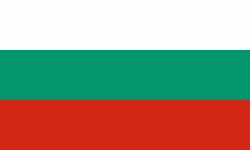Aytos
Aytos (Айтос ), sometimes written Aitos and Ajtos, is a town located in eastern Bulgaria some 30 kilometers from the Bulgarian Black Sea Coast and belonging to the administrative boundaries of Burgas Province. It is the administrative centre of the homonymous Aytos Municipality. As of December 2021, the town has a population of 18974 inhabitants.
Aytos has a rich and long history dating back to antiquity. Founded by Thracian tribes, archaeological finds near the town testify that its existence dates back to the 5th century BC. Throughout the centuries, the town has been known under different names including Aetòs (in Greek Αετός meaning eagle), Astòs (Αστός), Eidos (Είδος), Aquilia, Tchengis, etc.
During the reign of Khan Tervel, the region was incorporated in the Bulgarian Empire for the first time. The fortress Aetos took an important part in the defensive system of the Bulgarian lands against the sudden attacks of the Tatars, the Avars and the Crusaders.
In 1206, Aytos together with many cities in Bulgarian province of Thrace was destroyed by the Crusaders, led by Henry of Flanders. Henry of Flanders was a brother of Baldwin I, emperor of Latin Empire of Constantinople. A fortified city was rebuilt at 1488.
In 1378 the town was conquered by the armies of the Ottoman Empire under Murad I. During the Russian-Turkish War (1828–1829), General Hans Karl von Diebitsch turned the town into a strategic strong point. After the Treaty of Edirne in 1829, many of the town's citizens fled to Bessarabia to join the Bessarabian Bulgarians.
During the Bulgarian National Revival the population participated in the Bulgarian struggles for liberation. Vasil Levski organized a revolutionary committee in the town.
After the Liberation, Aytos became a commercial center, reputedly more important than Burgas. The first girls' agricultural school in the country was established in Aytos during the period.
Aytos has a rich and long history dating back to antiquity. Founded by Thracian tribes, archaeological finds near the town testify that its existence dates back to the 5th century BC. Throughout the centuries, the town has been known under different names including Aetòs (in Greek Αετός meaning eagle), Astòs (Αστός), Eidos (Είδος), Aquilia, Tchengis, etc.
During the reign of Khan Tervel, the region was incorporated in the Bulgarian Empire for the first time. The fortress Aetos took an important part in the defensive system of the Bulgarian lands against the sudden attacks of the Tatars, the Avars and the Crusaders.
In 1206, Aytos together with many cities in Bulgarian province of Thrace was destroyed by the Crusaders, led by Henry of Flanders. Henry of Flanders was a brother of Baldwin I, emperor of Latin Empire of Constantinople. A fortified city was rebuilt at 1488.
In 1378 the town was conquered by the armies of the Ottoman Empire under Murad I. During the Russian-Turkish War (1828–1829), General Hans Karl von Diebitsch turned the town into a strategic strong point. After the Treaty of Edirne in 1829, many of the town's citizens fled to Bessarabia to join the Bessarabian Bulgarians.
During the Bulgarian National Revival the population participated in the Bulgarian struggles for liberation. Vasil Levski organized a revolutionary committee in the town.
After the Liberation, Aytos became a commercial center, reputedly more important than Burgas. The first girls' agricultural school in the country was established in Aytos during the period.
Map - Aytos
Map
Country - Bulgaria
 |
 |
| Flag of Bulgaria | |
One of the earliest societies in the lands of modern-day Bulgaria was the Neolithic Karanovo culture, which dates back to 6,500 BC. In the 6th to 3rd century BC the region was a battleground for ancient Thracians, Persians, Celts and Macedonians; stability came when the Roman Empire conquered the region in AD 45. After the Roman state splintered, tribal invasions in the region resumed. Around the 6th century, these territories were settled by the early Slavs. The Bulgars, led by Asparuh, attacked from the lands of Old Great Bulgaria and permanently invaded the Balkans in the late 7th century. They established the First Bulgarian Empire, victoriously recognised by treaty in 681 AD by the Eastern Roman Empire. It dominated most of the Balkans and significantly influenced Slavic cultures by developing the Cyrillic script. The First Bulgarian Empire lasted until the early 11th century, when Byzantine emperor Basil II conquered and dismantled it. A successful Bulgarian revolt in 1185 established a Second Bulgarian Empire, which reached its apex under Ivan Asen II (1218–1241). After numerous exhausting wars and feudal strife, the empire disintegrated and in 1396 fell under Ottoman rule for nearly five centuries.
Currency / Language
| ISO | Currency | Symbol | Significant figures |
|---|---|---|---|
| BGN | Bulgarian lev | лв | 2 |
| ISO | Language |
|---|---|
| BG | Bulgarian language |
| TR | Turkish language |















